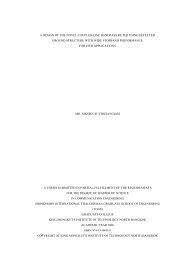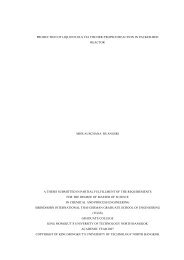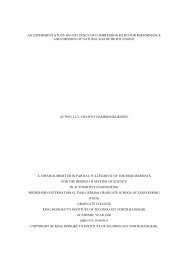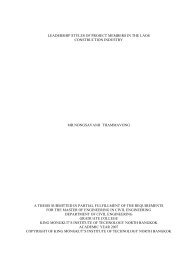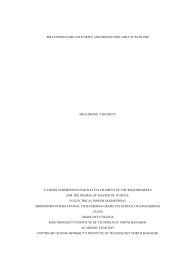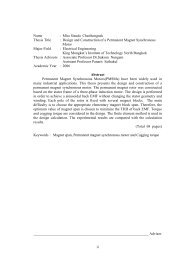a multi-objective bisexual reproduction genetic algorithm for ...
a multi-objective bisexual reproduction genetic algorithm for ...
a multi-objective bisexual reproduction genetic algorithm for ...
You also want an ePaper? Increase the reach of your titles
YUMPU automatically turns print PDFs into web optimized ePapers that Google loves.
2<br />
The classrooms are sometime shared between faculties. Each faculty needs its own<br />
timetable <strong>for</strong> its own resources. As a result, many problems still exist in the course<br />
scheduling related to the shared resources.<br />
Course scheduling itself contains a large number of conflicts and needs a large<br />
amount of processing time. For course scheduling in the <strong>multi</strong>ple faculties, the data<br />
used <strong>for</strong> scheduling also needs to be collected and shared across the faculties. This<br />
study proposes a hybrid centralized and de-centralized approach, <strong>genetic</strong> <strong>algorithm</strong>,<br />
and grid computing environment to the course scheduling problem in <strong>multi</strong>ple faculty<br />
universities. The proposed approach and the <strong>genetic</strong> <strong>algorithm</strong> are used to solve the<br />
NP hard problems. In addition, the grid computing environment is used as<br />
infrastructure <strong>for</strong> distributed and parallel computing.<br />
1.1.2 Background<br />
The <strong>genetic</strong> <strong>algorithm</strong> (GA) is a global search optimization <strong>algorithm</strong> using<br />
parallel points. While searching <strong>for</strong> solutions, the GA uses a fitness function that<br />
affects the direction of the search [6]. The GA evaluates the population by using<br />
<strong>genetic</strong> operators such as selection, crossover, and mutation. The outline of the basic<br />
GA is presented in Figure 1-2.<br />
1 [Start] Generate random population of n chromosomes.<br />
2 [Fitness] Evaluate the fitness f(x) of each chromosome x in the population.<br />
3 [New population] Create a new population by repeating following steps until the new population is<br />
complete.<br />
3.1 [Selection] Select two parent chromosomes from a population according to their fitness (the better<br />
fitness, the bigger chance to be selected).<br />
3.2 [Crossover] With a crossover rate cross over the parents to <strong>for</strong>m new offspring (children). If no<br />
crossover was per<strong>for</strong>med, offspring is the exact copy of parents.<br />
3.3 [Mutation] With a mutation rate mutate new offspring at each locus (position in chromosome).<br />
3.4 [Accepting] Place new offspring in the new population.<br />
4 [Replace] Use new generated population <strong>for</strong> a further run of the <strong>algorithm</strong>.<br />
5 [Test] If the end condition is satisfied, stop, and return the best solution in current population.<br />
6 [Loop] Go to step 2.<br />
FIGURE 1-2 Outline of the basic <strong>genetic</strong> <strong>algorithm</strong> [6]




